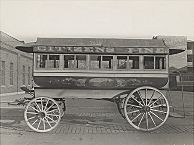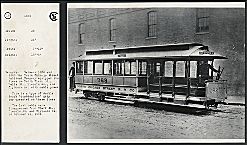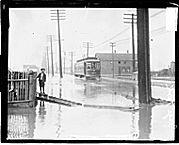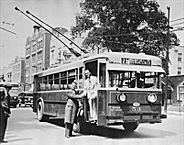| Entries |
| P |
|
Public Transportation
|

|
The first public transportation vehicles were omnibuses, which were horse-drawn carriages seating 20 to 30 people developed in France in the 1600s. In Chicago, the first omnibuses in 1852 were nothing more than intercity stagecoaches put out of business by the newly arrived railroads and relegated to shuttling passengers between railroad stations. Omnibus operators probably filled seats with local commuters willing to pay a nickel to avoid walking. Cabs at the time cost 30 cents a ride and livery stable operators charged three dollars a day to rent a horse and carriage.

|
In 1855–56 the mainline railroads began hauling local passengers to nearby summer resorts and offered them discounted or “commuted” fares to attract business. As the resorts grew, they became year-round settlements, or suburbs, and the residents who rode the trains to work each day in Chicago became known as commuters.

|
Motor buses appeared during World War I but did not make much of an impact on public transportation for a decade. In 1958 the Chicago Transit Authority completed its program to replace streetcars with buses.

|
By the end of the twentieth century Chicago's public transportation system had grown into one of the largest in the world run by several public authorities. The commuter railroads consisted of more than five hundred miles of lines served by 130 locomotives and 970 passenger cars providing approximately 75 million rides a year. Pace carried 39 million riders on more than 600 buses and 300 paratransit vehicles. The Chicago Transit Authority, the largest of the public transportation systems in 1997, carried 287 million riders annually on approximately 1,900 buses and 130 million on 1,150 rapid transit cars.

|
The Encyclopedia of Chicago © 2004 The Newberry Library. All Rights Reserved. Portions are copyrighted by other institutions and individuals. Additional information on copyright and permissions.